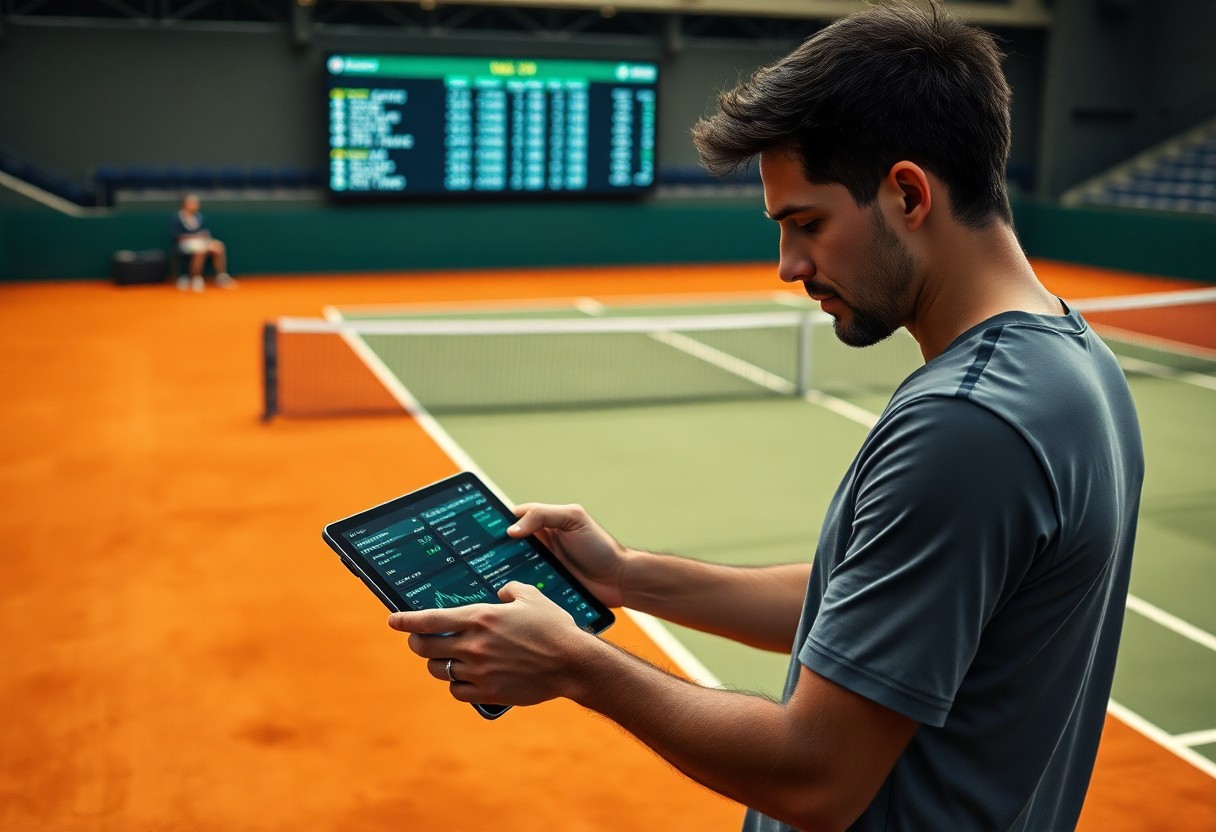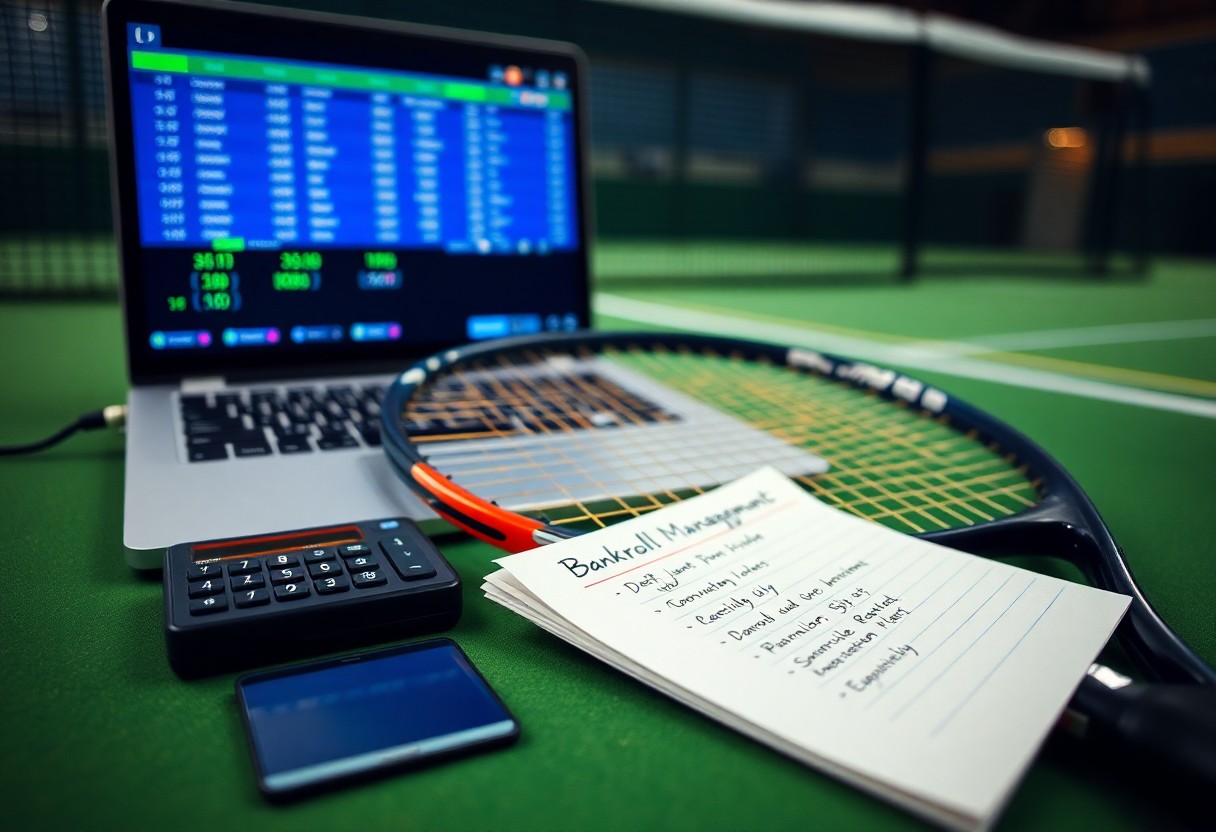This guide investigates into the intricacies of player form and surface types, two necessary factors that can significantly influence the outcome of tennis matches and betting strategies. Understanding a player’s recent performances, along with their adaptability to different court surfaces, can help bettors make informed decisions. By analyzing statistics, head-to-head matchups, and surface-specific strengths, bettors can identify opportunities and mitigate risks, enhancing their betting success in this dynamic sport.
Understanding Player Form
Player form significantly impacts performance and betting outcomes in tennis. A player’s momentum, including their recent match results, can reflect both confidence and skill levels. It’s vital for bettors to assess not just win-loss records but also the quality of opponents faced and the manner of victories or losses, as these factors can influence a player’s psychological and physical readiness on the court.
Types of Player Form
There are different variations of player form that bettors need to be aware of.
- Winning Streaks – Indicates strong confidence and momentum.
- Slump – A series of losses can affect player psychology.
- Injury Recovery – Recent injuries might impact performance.
- Surface Adaptation – Players may excel on certain surfaces.
- Season Context – Early vs. late season form can differ.
Assume that assessing these types leads to more informed betting decisions.
| Player Form Type | Impact on Betting |
| Winning Streaks | Higher confidence and likelihood of continued success. |
| Slump | Greater risk of poor performance and unexpected upsets. |
| Injury Recovery | Unpredictable performance levels affecting match outcomes. |
| Surface Adaptation | Players may underperform on less favorable surfaces. |
| Season Context | Performance may vary based on the timing within a season. |
Factors Influencing Player Form
Various elements contribute to fluctuations in player form, impacting their performance on the day of the match. Key aspects include physical conditioning, mental state, and recent experiences both on and off the court.
- Physical Fitness – Affects stamina and durability.
- Mental Toughness – Impacts a player’s ability to handle pressure.
- Coaching Influence – Changes in coaching staff can alter strategies.
- Travel Fatigue – Long travel schedules may affect performance.
- Match Environment – Crowd and conditions play a role.
Thou must remember that all these factors can converge to create unpredictable outcomes in matches.
Delving deeper into factors, physical fitness plays a fundamental role in a player’s ability to maintain high-level performance. For instance, a player’s preparation and conditioning can significantly define their endurance during long matches. Likewise, mental toughness can entirely change match dynamics; players with high resilience often outperform expectations under pressure. Coaching influence is another factor, as strategic adjustments can provide a competitive advantage. Moreover, travel fatigue often goes unnoticed but can heavily impact players’ readiness. Lastly, the match environment, such as crowd support or unfavorable weather, can also swing the momentum in critical moments.
- Physical Fitness – Optimal conditioning vital for success.
- Mental Resilience – Essential for high-pressure situations.
- Coaching Strategies – Effective tactics lead to better outcomes.
- Travel Considerations – Impact player fatigue levels significantly.
- Environmental Factors – Conditions can alter match performance.
Thou must analyze these insights to enhance betting strategies effectively.
Analyzing Surface Types
Surface types significantly influence player performance in tennis. Different surfaces impact the ball speed, bounce height, and player movement. Understanding these characteristics can enhance betting strategies and player analysis. An effective assessment involves examining historical performance on various surfaces. After understanding these elements, bettors can make more informed decisions based on player strengths.
| Surface Type | Impact on Play |
| Hard Court | Fast play, consistent bounce |
| Clay Court | Slower play, high bounce |
| Grass Court | Fast, low bounce |
| Indoor | Controlled conditions, fast pace |
Types of Surface in Tennis
There are three primary surface types in tennis: hard courts, clay courts, and grass courts. Each type influences game dynamics and player preferences, affecting their overall success rates. Hard courts are known for quick games, while clay favors baseline rallies. Grass courts lead to rapid, low-bounce play, benefiting serve-and-volley specialists. This diversity allows for a wide range of playing styles and match outcomes.
| Surface Type | Characteristics |
| Hard Court | Durable, a mix of speed and good bounce |
| Clay Court | Slower, enhances endurance and strategy |
| Grass Court | Fast, favors aggressive players |
| Indoor | Standardized conditions, less affected by weather |
Pros and Cons of Each Surface
Pros and Cons of Each Surface
| Surface | Pros |
| Hard Court | Versatile play, quick adaptation |
| Clay Court | Promotes long rallies, good for strategic play |
| Grass Court | Fast action, advantageous for serve-and-volley players |
| Indoor | Consistent playing conditions, less variability |
Each tennis surface possesses its unique advantages and drawbacks, influencing gameplay and player strategies. Hard courts offer fast-paced matches, making them favorable for aggressive players. Conversely, clay surfaces enhance endurance and tactical play, often resulting in longer rallies. Grass courts create rapid play but can disadvantage players who rely on groundstrokes. Indoor courts have the advantage of consistency, reducing the effects of external factors, leading to a more controlled game experience.
| Surface | Cons |
| Hard Court | Can lead to injuries due to firmness |
| Clay Court | Slower play may frustrate aggressive players |
| Grass Court | Requires maintenance, unpredictable bounces |
| Indoor | Limited fan engagement, lacks atmospheric variety |
Key Factors for Successful Betting
Effective betting hinges on understanding key aspects that influence match outcomes. Key factors include player form, surface type, head-to-head records, injury status, and weather conditions. Each factor can significantly alter expectations and results, making it imperative to analyze them carefully before placing bets. Recognizing these elements can lead to more informed and profitable betting decisions.
- Player form
- Surface type
- Head-to-head records
- Injury status
- Weather conditions
Tips for Betting Based on Player Form
Evaluating player form is vital for betting success. Look for streaks in a player’s performance, analyze their recent match results and consider factors like confidence, match fitness, and psychological aspects. Assessing a player’s ability to handle pressure during crucial matches can also provide insights into their likely performance. Assume that consistently high-performing players will maintain their level, but be cautious if they show signs of fatigue or injury.
- Recent match results
- Confidence
- Physical fitness
- Psychological resilience
- Streak analysis
Tips for Betting Based on Surface Types
Surface types impact how matches are played and can influence outcomes significantly. For instance, hard courts benefit aggressive baseline players, while clay courts favor players with strong tactical gameplay and endurance. Assess how players have historically performed on specific surfaces and consider their playing style when betting. Thou must analyze performance statistics in relation to the surface types to make well-informed decisions.
- Historical performance
- Playing styles
- Surface speed
- Match-up analysis
- Tactical adaptability
| Surface Type | Influence on Performance |
| Hard Court | Favors aggressive and powerful players |
| Clay Court | Benefits tactical players with endurance and patience |
| Grass Court | Supports serve-and-volley styles and quick points |
| Indoor Courts | Minimizes external factors and speeds up gameplay |
| Outdoor Courts | Can be affected by weather, influencing match dynamics |
Understanding various surface types provides valuable insights into players’ strengths and weaknesses. Each surface alters both ball behavior and match dynamics, which can substantially affect outcomes. For example, the fast pace on hard courts benefits aggressive players, while clay courts emphasize endurance and strategic play. Thou should always consider past performances across surfaces to predict how players may adapt to upcoming matches.
- Ball behavior
- Match dynamics
- Player strengths
- Past performances
- Adaptive strategies
| Surface Type | Key Characteristics |
| Hard Court | Consistent bounce, fast-paced |
| Clay Court | Slower, high bounce, requires stamina |
| Grass Court | Fast, low bounce, favorable for serve-and-volley |
| Indoor Courts | Controlled environment, uniform conditions |
| Outdoor Courts | Affected by wind and sun, can change game strategies |
Step-by-Step Guide to Betting Strategy
| Step | Description |
| 1 | Research player performance to understand their strengths and weaknesses. |
| 2 | Assess surface preferences to identify players’ comfort levels on different courts. |
| 3 | Analyze head-to-head records for matchup insights. |
| 4 | Monitor recent form, injuries, and external factors like weather conditions. |
| 5 | Determine value bets by comparing odds with your analysis. |
Researching Player Performance
Evaluating a player’s past performances is fundamental in betting. Look at statistics such as win-loss records, serving efficiency, and break points won. A player on a winning streak with a solid record against a specific opponent presents valuable betting opportunities. Analyzing recent matches can provide insights into their current form and mindset, emphasizing the importance of consistent performance over time.
Assessing Surface Preferences
Understanding how players perform on different surfaces is pivotal. Some players excel on clay, while others dominate on grass. For instance, Rafael Nadal’s exceptional clay court record contrasts with his historical challenges on faster courts like grass. Examine player statistics on each surface to highlight these preferences, paying attention to their playing styles and adaptability.
Surface preferences can highlight significant disparities in player performance. For example, Djokovic consistently showcases great results on hard courts, while players like Schwartzman thrive on clay. Historical matchups reveal that players who adapt well to a specific surface generally perform better, not merely due to skill but because they’ve developed strategies that exploit their strengths against opponents’ weaknesses. A player’s comfort and familiarity with the surface can directly impact their effectiveness and, consequently, their chances of winning, making it vital for informed betting decisions.
Common Mistakes in Tennis Betting
Many bettors fall into traps that can skew their insights and predictions. From neglecting recent performance indicators to oversimplifying match conditions, these missteps can lead to significant losses. Understanding these common pitfalls is vital for making informed bets and enhancing overall strategy.
Ignoring Player Form
One significant error is overlooking a player’s current form. An athlete on a winning streak often carries momentum, translating to higher confidence and improved performance. Conversely, a player in a slump may struggle, regardless of their ranking or past successes. Recent match results should always be a primary focus when evaluating potential outcomes.
Underestimating Surface Impact
The surface on which the match is played can profoundly affect the outcome. For instance, players like Rafael Nadal excel on clay due to his sliding ability and longer rallies, while others might thrive on faster surfaces like grass. Analyzing player preferences and success rates on specific surfaces can reveal trends that are pivotal for betting success.
Each surface type alters not only the game’s pace but also how players interact with the ball. Most professional players exhibit varied performances depending on whether they are on hard courts, clay, or grass. For example, a player who bombs serves effectively on grass may struggle to find consistency on clay, where rallies extend and require more strategic shot placement. Metrics like ace counts, break points saved, and historical win percentages on specific surfaces should be carefully considered when placing bets, as they can either confirm a strong wager or signal a potential upset waiting to happen.
Advanced Betting Techniques
Advanced betting techniques can significantly enhance your chances of success in tennis betting. These strategies often involve a deep explore player performance metrics, situational analysis, and understanding market movements. Leveraging advanced methods can provide a sharper edge in a competitive betting environment.
- Understand statistical models to predict outcomes.
- Utilize betting exchanges for better odds.
- Monitor live match conditions and player form.
- Incorporate head-to-head statistics for deeper insights.
| Technique | Description |
|---|---|
| Statistical Analysis | Using data trends to predict match outcomes. |
| Market Movement | Following changes in betting odds to find value. |
| Live Betting | Adjusting bets based on real-time match developments. |
Using Statistics to Inform Bets
Statistics play a vital role in formulating informed betting decisions. Analyzing player statistics, such as serve percentages, break points won, and overall match history, allows bettors to gauge potential outcomes accurately. Insights from recent matches can reveal trends and help in identifying value bets that may not be evident at first glance.
Live Betting Strategies
Live betting offers unique opportunities through real-time updates, enabling bettors to capitalize on in-play developments. Monitoring fluctuations in player performance can lead to profitable wager adjustments, especially when a player faces momentum shifts during a match. Keeping a close eye on the state of the game allows for responsive betting actions.
Effectively implementing live betting strategies requires quick decision-making and an acute awareness of match dynamics. For example, if a player who typically serves well begins to struggle, adjusting your bet based on this observed decline can yield favorable returns. Timing is important; a notable shift in the game’s flow often results in advantageous odds. By harnessing the immediacy of live data, bettors can exploit opportunities that traditional betting methods may overlook.
Conclusion
With this in mind, recognizing the significance of player form and surface types is imperative for informed tennis betting. Analyzing recent performance trends and specific playing conditions can greatly influence outcomes and betting strategies. By emphasizing these key factors, bettors can enhance their understanding and make more strategic decisions, ultimately improving their chances of success in the dynamic world of tennis wagering.
FAQ
Q: What factors influence a player’s form in tennis betting?
A: A player’s form can be influenced by recent match results, fitness levels, and performance consistency. Analyzing victories against strong opponents, physical health, and play style effectiveness can provide insight into their current standing.
Q: How does the surface type affect tennis match outcomes?
A: Different surface types, including clay, grass, and hard courts, impact players’ performances based on their individual strengths and weaknesses. For example, some players excel on grass due to their serve-and-volley style, while others may perform better on clay due to their baseline skills.
Q: Why is it important to consider both player form and surface type when betting?
A: Analyzing both player form and surface type offers a comprehensive view of potential match outcomes. A player in great form may still struggle on an unfavorable surface against a specialist, making it vital to evaluate both aspects for informed betting decisions.




